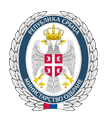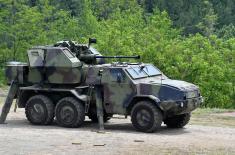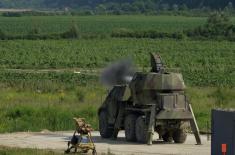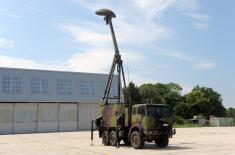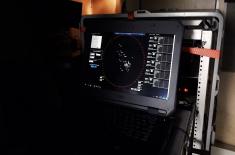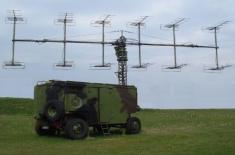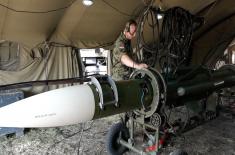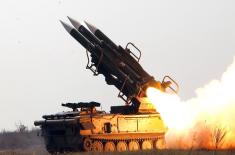14.09.2020.
Modernization of AD systems for our safe sky
The Serbian Armed Forces are constantly being modernized, and after a number of years, the air defence systems are being intensively developed. Keeping up with world trends, engineers and constructors of the Ministry of Defence and the Serbian Armed Forces find the best solutions that can be applied to our military equipment in our defence-technology industrial base. Thanks to that, the Serbian Armed Forces are able to equip and arm themselves much more cheaply.
 The KUB missile system is a self-propelled missile system intended for the destruction of various types of aircraft. The system is characterized by high mobility and the possibility of centralized division-level command and fire control. By modernizing this missile system, a higher level of efficiency is achieved, better protection of the crew is provided and the use of resources is spared. The modernization includes the Fire Command and Control Unit, the P-40 Radar Station consisting of the 1RL-128D Surveillance and Target Acquisition Radar and the PRV-16 (9) B Height Finding Radar, as well as the Reconnaissance and Guidance Radar Station.
The KUB missile system is a self-propelled missile system intended for the destruction of various types of aircraft. The system is characterized by high mobility and the possibility of centralized division-level command and fire control. By modernizing this missile system, a higher level of efficiency is achieved, better protection of the crew is provided and the use of resources is spared. The modernization includes the Fire Command and Control Unit, the P-40 Radar Station consisting of the 1RL-128D Surveillance and Target Acquisition Radar and the PRV-16 (9) B Height Finding Radar, as well as the Reconnaissance and Guidance Radar Station.The modernization of the KUB missile system retains its basic purpose and improves the characteristics of the system, including, primarily, the efficiency of the command system, a better use of information capabilities, getting a more complete and clearer picture of airspace, the accuracy of air target tracking and directing tracking radars and weapons, as well as the capability of guiding tracking radars and weapons without the inclusion of their own radar equipment.
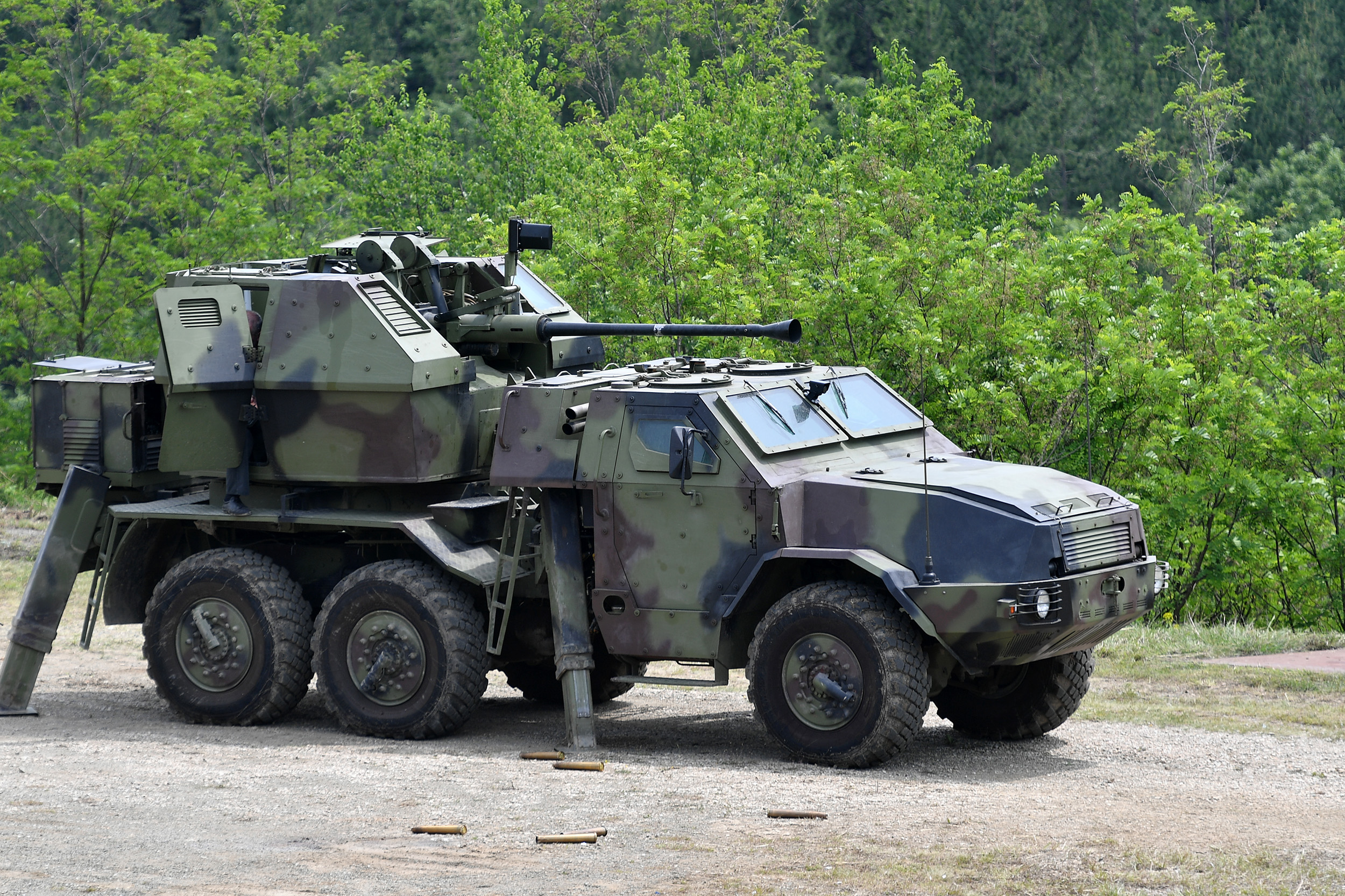 The "BOFORS" - "PASARS" anti-aircraft system is also being modernized. It is intended for the protection of army units on the march and during combat operations against air attacks, the protection of important facilities as well as for successfully engaging ground and water targets.
The "BOFORS" - "PASARS" anti-aircraft system is also being modernized. It is intended for the protection of army units on the march and during combat operations against air attacks, the protection of important facilities as well as for successfully engaging ground and water targets.The modernization includes the installation of a rotating platform with a central part of the L/70 gun on a modified FAP 2228 vehicle with and armoured driver's cabin and an armoured gunner’s turret, the integration of automatic stabilization and levelling systems, the installation of a new higher-capacity ammunition magazine, the introduction of a modern GPS device and a tablet/PC with CIS for the commander.
The basic variant of the "PASARS" anti-aircraft system from phase 1 was introduced into the armament of the Serbian Armed Forces in 2019, and on the basis of it, a zero series was produced which is still being tested. Also, in accordance with the principles of spiral development, the final tests of the new subsystems from phase 2 are underway. These subsystems will further improve this anti-aircraft weapon and all "PASARS" systems will be equipped with them in the future, including those from the zero series.
Phase 2 includes a new diesel engine generator and power subsystem, a new driver vision subsystem, i.e. the subsystem for driving with front and rear cameras by day and night, a new thermal imaging sight that will significantly improve the system’s capability and a new subsystem for electronic timing of pre-fragmented ammunition.
Phase 3 of the modernization of "PASARS" includes the integration of the missile system. One of those systems is the infrared self-guided missile system "Igla", which the Serbian Armed Forces have. Design tests of this integration are underway, after which all previously completed "PASARS" weapons will be equipped with this missile system, which will significantly increase its efficiency against air targets.
The launchers and other elements for the integration of the "Igla" missile system on "PASARS" will be used for the integration of the newly acquired "Mistral" infrared self-guided missiles, which are probably the best in the world in their class at the moment.
The modernization of the system includes a better off-road mobility compared to the existing 40 mm L/70 BOFORS gun, a faster transition from the marching to combat position and vice versa (less than 2 minutes), increased firepower and a more successful detection and target acquisition as well as a more successful engagement of air and ground targets by day and night and in poor visibility conditions. Equipping the Serbian Armed Forces with the "PASARS" anti-aircraft system will significantly increase the level of protection of army units against air attacks during marching and combat operations.
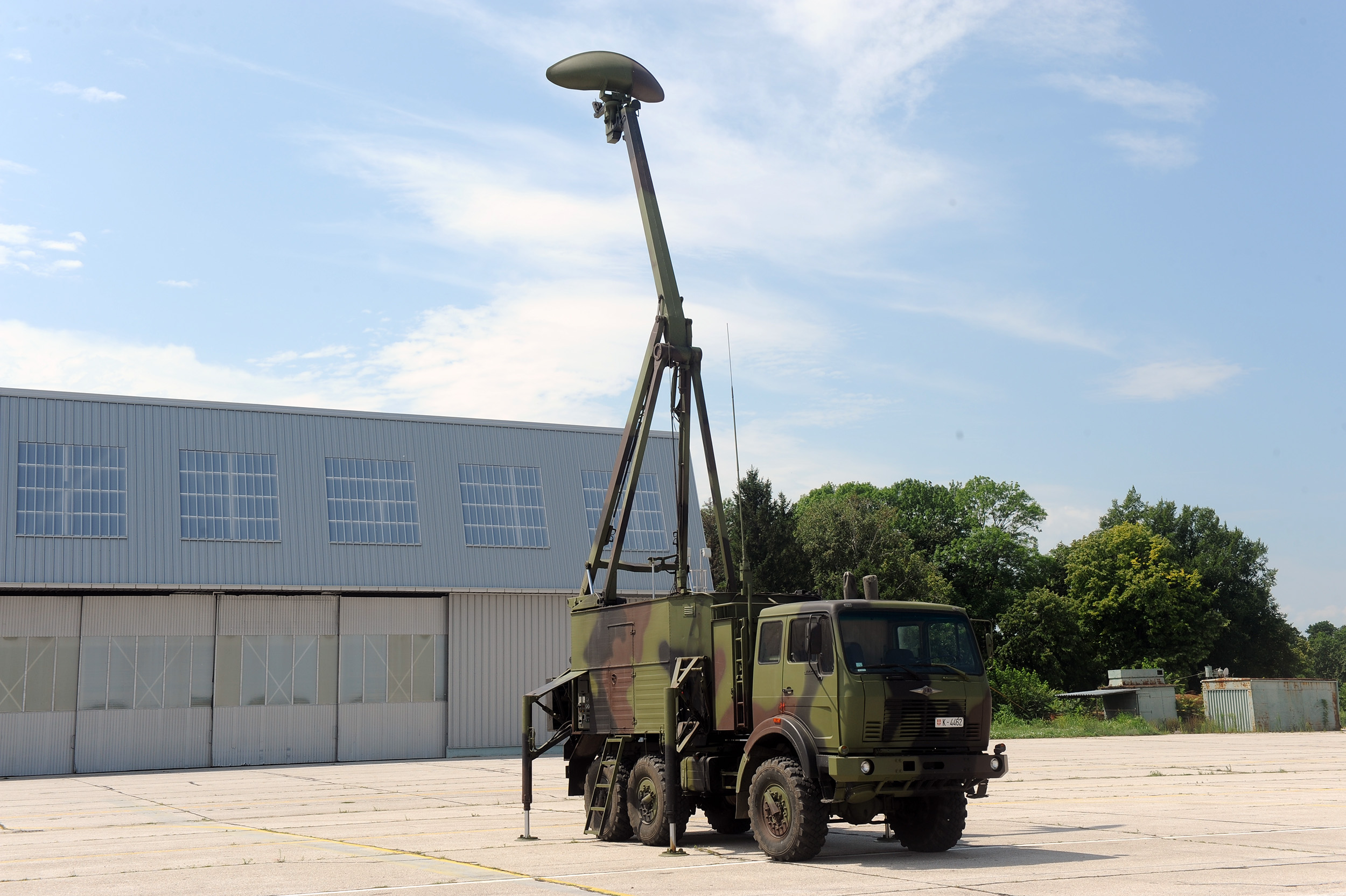 For the modernization of the M-85 "Giraffe" radar - surveillance radar intended for tracking air targets, determining their coordinates and sending them to anti-aircraft systems "BOFORS" / "PASARS", tests are underway before the introduction of the software radar receiver which significantly improves its capabilities. The scope of the modernization includes software signal processing, modernization of radar subsystems, installation of a GPS device and a new telecommunications subsystem with a high level of protection.
For the modernization of the M-85 "Giraffe" radar - surveillance radar intended for tracking air targets, determining their coordinates and sending them to anti-aircraft systems "BOFORS" / "PASARS", tests are underway before the introduction of the software radar receiver which significantly improves its capabilities. The scope of the modernization includes software signal processing, modernization of radar subsystems, installation of a GPS device and a new telecommunications subsystem with a high level of protection.Target detection, determining the characteristics of detected objects in the air, tracking and transmission of surveillance data obtained by air defence missile units are carried out in real time by applying modern algorithms in radar signal processing. The safety of the crew in the war will be significantly increased by introducing a detached post. The integration of the system which automatically levels the radar cabin and raises the antenna mast makes the transition from the marching to combat position and vice versa faster.
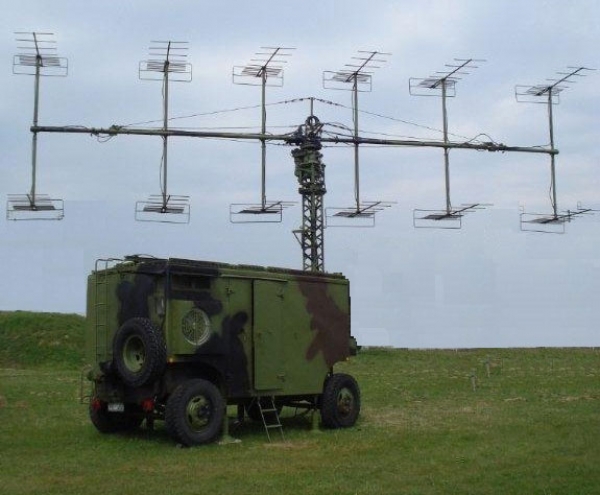 P-12 and P-18 radars are long-range meter wave air surveillance radars, intended for airspace surveillance, detection of objects in the airspace, classification of targets, automatic processing and transmission of surveillance data.
P-12 and P-18 radars are long-range meter wave air surveillance radars, intended for airspace surveillance, detection of objects in the airspace, classification of targets, automatic processing and transmission of surveillance data.The modernization of the "P" type radar includes the modernization of the solid state transmitter and receiver, digital signal processing system, the operator control console, a detached post, as well as the cabin air conditioning system and other subsystems. The modernization maximizes the improvement of characteristics of the radars, prolongs their service life, modernizes the systems with new hardware and software solutions, provides complete software reprogrammability, as well as the engagement of domestic research and development capacities and reduces dependence on imports.
 PHOTOGALLERY
PHOTOGALLERY VIDEOGALLERY
VIDEOGALLERY14.09.2020
 mp4 (111,78 MB)
mp4 (111,78 MB)Video clip 1
